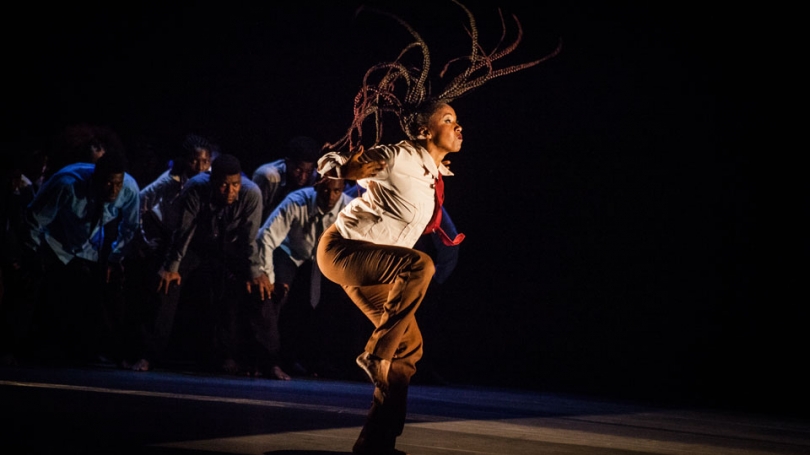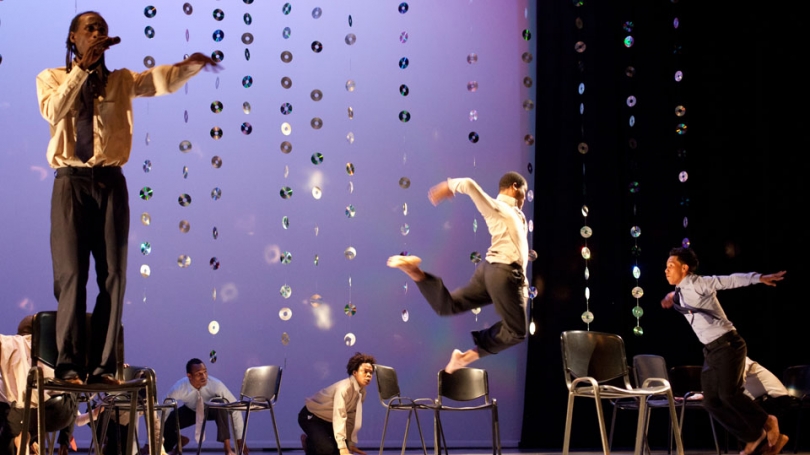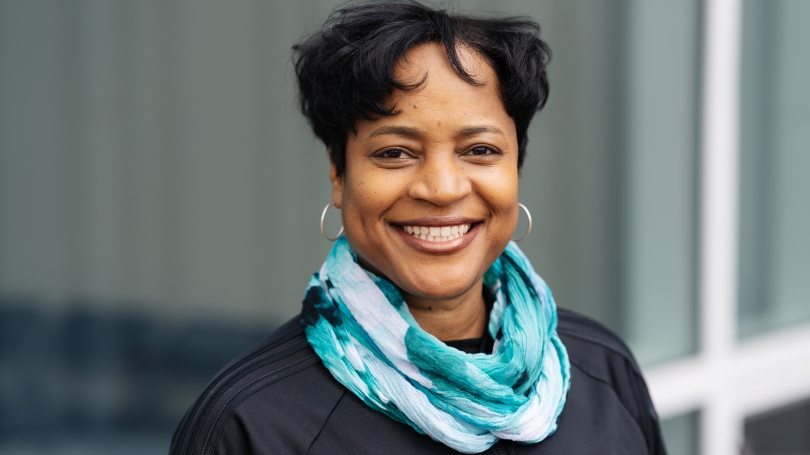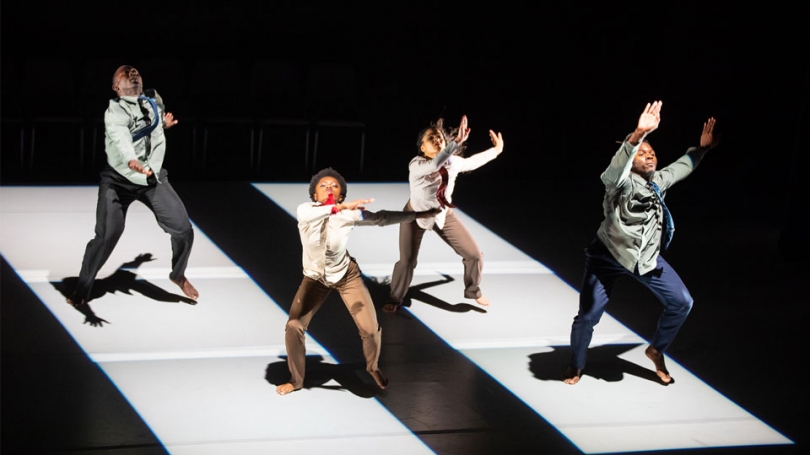"Serious, but funky and relatable": Sankofa Danzafro's "The City of Others"
Hop Associate Producer Felicia Swoope '91 on a group of artists she helped bring to the Hop.
One of the questions Hop employees are asked most frequently is, "Who chooses the artists who come to the Hop?" The answer: Many people. The Hopkins Center for the Arts Programming Committee includes employees from across the organization who pitch their own suggestions for artists and also pass along suggestions from outside the committee and the Hop. With years of planning it all comes together in an integrated menu of visiting artists addressing salient themes across disciplines and complementing the work of Dartmouth students and faculty.
We have Felicia Swoope to thank for bringing Sankofa Danzafro's The City of Others to the Hop September 26 and 27. This powerful work of dance theater is by and about black Colombians, drawing on capoeira, contemporary dance, hip-hop and African forms. Felicia is an associate producer at the Hop who also programs the Thursday Night Live series, which regularly turns the Top of the Hop (and other spaces) into an arts-infused social space. Her background as a professional dancer and dance administrator, as well as an undergraduate dancer at Dartmouth, give her valuable perspective on how visiting artists can inspire and challenge the Dartmouth community today.
We talked with Felicia about Sankofa Danzafro and The City of Others and how it transforms a specific socio-cultural narrative into an accessible celebration of community.
How did you get to know Sankofa and The City of Others?
I went to New York to see them perform last October at the Joyce Theater. This show includes music, dance and singing, and the dancers do all of it. They start singing in the middle of dancing; they're playing instruments. It really is a protest piece about their lives in Colombia. They face a lot of discrimination, there are a lot of inequities – socially, economically. The choreographer, Rafael Palacios, created The City of Others to explain to the world what was happening to Afro-Colombians and all the struggles they face. The dancers told their life stories to the choreographer, and these became the storyline of the work. There are many solos in the piece where they explain through movement and song what they have been through. But while you hear these individual stories, you also see the dancers work at creating community. There are times when the whole group comes together and lifts one dancer. It's really beautiful.
What kinds of feelings did the work leave you with?
In a talk after the show, Rafael explained that they don't want to present Colombia as this horrible place, because there's beauty as well as suffering, but they also want people to connect with what they are doing, and are most concerned with touching humanity. So even though the piece is very specific to Medellin, the city Sankofa is based in, they want audiences from other places to be able to connect to what they are doing. I was able to connect because, like me, the dancers are of African descent but also because the dance forms were so familiar. There's a little bit of hip hop, there's jazz, modern, African dance, Latin – they brought all these familiar styles together. They are from so far away and yet the movement was so familiar to me. The stories and emotions are in your face but they aren't overdone. You don't feel oppressed, you feel uplifted. You see these dancers as warriors. They fist-pump, they are fighting for their place in the world. And this piece helped them find that place.
What do you think audiences at the Hop will connect to in The City of Others?
I think audiences will feel lifted up. Obviously, the dancers have gone through a lot of pain, and they continue to. But choosing to turn it into something they can share with people and that people can celebrate is the right thing to do. It's therapeutic and they get to enjoy themselves. Even though they are speaking Spanish and you might have no idea what they are saying , you can constantly relate to what they are representing on stage because it's human.
How about the Dartmouth students and other younger audience members? What's in it for them?
I definitely think that, particularly in this current political climate, it will be wonderful to see a company of young people performing for people their same age. They may look different, they may speak a different language, but everyone in that young age group has struggles, and I'm hoping that our students will be able to identify with that. I also think the movement itself will captivate kids here, because the kind of movement kids are doing these days, especially now that hip hop is so globally popular. I think they'll be able to identify with it. I think it will make them groove. Even though it's serious, just the funkiness of the dance will be so relatable."



